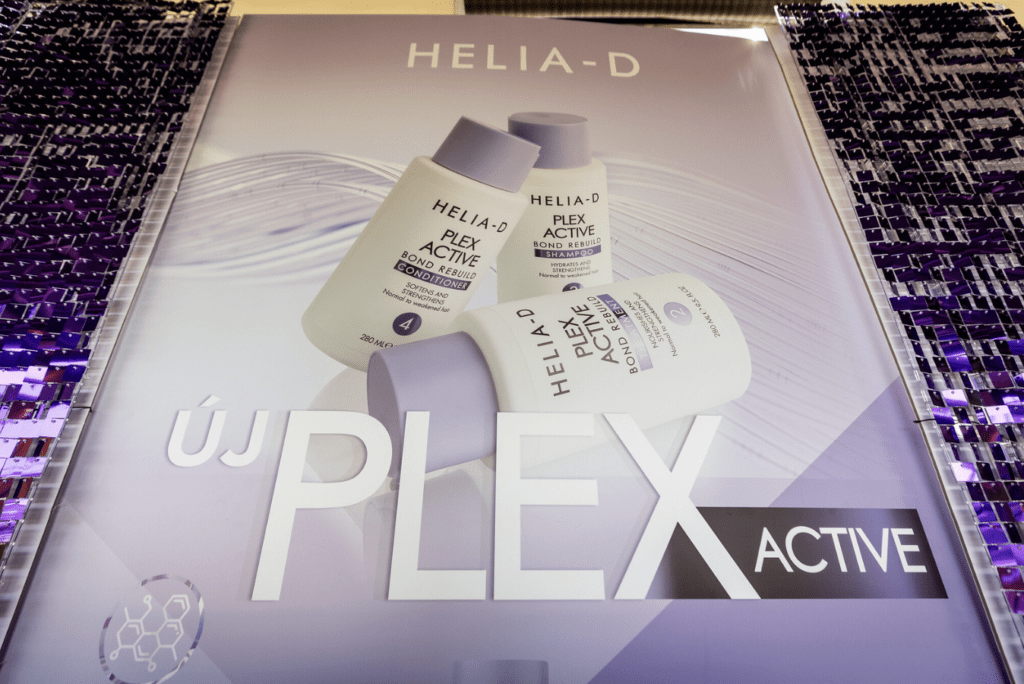This is how you can keep your hair and skin healthy during the approaching summer heatwave
Styling, dyeing and blow-drying can all weaken the internal structure of the hair, and in the summer, sunlight, chlorinated water, salty sea air and heat can further increase the damage. Increased UV exposure also takes its toll on the skin. The good news: with the right beauty routine, hair and facial skin can maintain their healthy glow even during the summer months. Helia-D’s new products, rich in active ingredients and modern technology, help with this.
 Just like our wardrobe, it is worth adapting our beauty routine to the season. We moisturize and use sunscreen – this is already natural for many. But it is at least as important to prevent damage or regenerate hair and facial skin damaged by sunlight and heat.
Just like our wardrobe, it is worth adapting our beauty routine to the season. We moisturize and use sunscreen – this is already natural for many. But it is at least as important to prevent damage or regenerate hair and facial skin damaged by sunlight and heat.
Hair doesn’t forget – and it doesn’t always regenerate on its own
Everyday blow-drying, styling or dyeing, and external summer influences – such as heat, chlorine or salt water – gradually weaken the internal structure of the hair. The hair shaft is made up of three layers: the outer protective layer is the cuticle, the middle is the cortex – where the keratin fibers and chemical bonds responsible for holding the hair are located, and the inside is the medulla. If the outer layer is damaged, the hair cortex becomes vulnerable, substances that damage the bonds can enter, and the hair weakens and begins to break.
Helia-D’s new Plex Active hair care family, developed by Hungarian experts, offers a solution to this problem. The essence of Plex technology is that it rebuilds the internal bonds of the hair shaft, while also creating new hydrogen and ion bonds, resulting in an even stronger, more flexible hair structure. The active ingredients that build the hair bond are combined with moisturizing, nourishing ingredients to make the hair not only healthier and more resistant, but also softer and shinier. With regular use, the combination of shampoo, conditioner, hair strengthening serum, treatment and hair end care oil effectively strengthens and enriches the hair strands, while preserving their natural beauty. The Plex Active hair strengthening routine is especially useful for damaged, colored or chemically treated hair, but is also recommended for maintaining the health of untreated hair.
Summer leaves its mark on the skin – this is how you can fight pigment spots
Sun exposure is one of the main causes of pigment spots – even if we use sunscreen. According to last year’s research by Helia-D, 61% of Hungarian women aged 20-29 regularly use sunscreen, while this rate is only 36% for those in their thirties. It is no coincidence that many people experience a more uneven skin tone or darker pigment spots by the end of summer. The Helia-D Cell Concept Exfoliating-Lightening family helps lighten pigment spots in three ways: the acid content of the exfoliating solution supports skin renewal, the lightening serum reduces existing spots and inhibits melanin formation, while the lightening fluid, which also provides SPF50 sun protection, prevents the formation of new skin blemishes. The active ingredients – acids, antioxidants and peptides – together result in a more even tone and brighter complexion.
Related news
ITAKA Hungary launches the 2026 summer season with a new destination and pre-booking discounts
🎧 Hallgasd a cikket: Lejátszás Szünet Folytatás Leállítás Nyelv: Auto…
Read more >Brands under the Christmas tree
🎧 Hallgasd a cikket: Lejátszás Szünet Folytatás Leállítás Nyelv: Auto…
Read more >Budapest Airport pays summer bonus to its employees after record traffic
🎧 Hallgasd a cikket: Lejátszás Szünet Folytatás Leállítás Nyelv: Auto…
Read more >Related news
How do young adults celebrate?
🎧 Hallgasd a cikket: Lejátszás Szünet Folytatás Leállítás Nyelv: Auto…
Read more >Vajda-Papír celebrates Ooops!’s 15th anniversary with a hybrid AI campaign
🎧 Hallgasd a cikket: Lejátszás Szünet Folytatás Leállítás Nyelv: Auto…
Read more >Pre-holiday shopping at up to half price
🎧 Hallgasd a cikket: Lejátszás Szünet Folytatás Leállítás Nyelv: Auto…
Read more >






